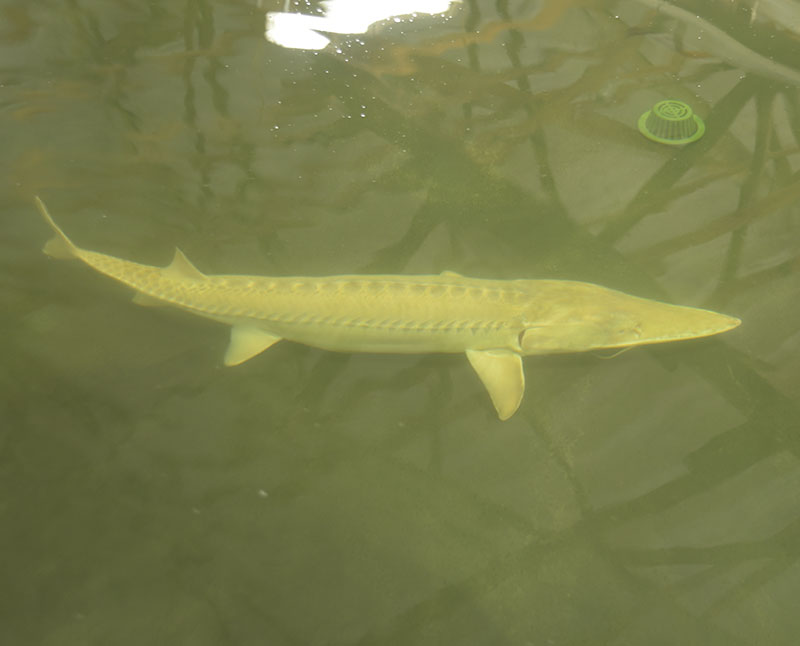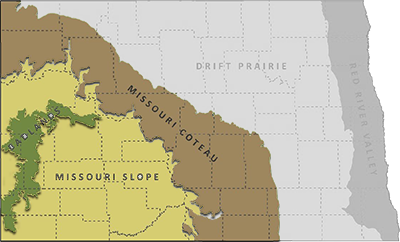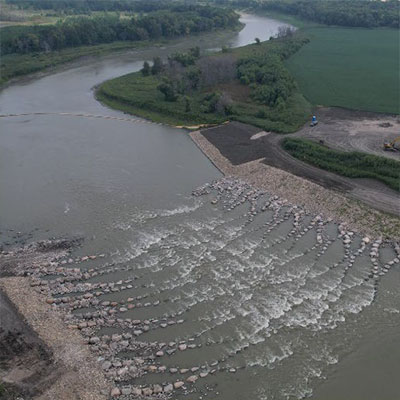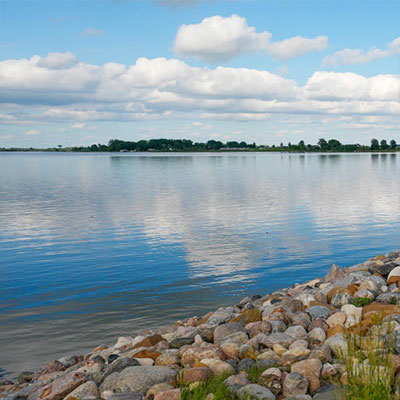Pallid Sturgeon

NDGF
Grows up to seven feet in length. Light gray in color with a lighter underside. Small black eyes set on a shovel-shaped head. Four barbels on the underside of the head with the two inner barbels shorter than the outer two. This distinguishes it from the common shovelnose sturgeon. The top side of its body is covered in large scales called scutes.
Status in North Dakota
Year-round resident. Abundance: Rare.
Reason for SWAP Designation
Loss of river habitat due to channelization and impoundment has caused declines in this species within the state and range wide.
Dams have also fragmented populations.
Threats
Destruction and alteration of habitats by human modification of the river system is likely the primary cause of declines in reproduction, growth, and survival of Pallid Sturgeon (USFWS 1993).
Much of the species’ habitat was destroyed when a number of large dams were constructed on the Missouri River, producing a number of large reservoirs.
These structures changed the velocity, volume and timing of flows in the river from pre-impoundment.
In the system much of the remaining river has been channelized.
This has changed the velocity, reduced the width of the river, and prevented water flow into backwater areas important to this species (USFWS 1993).
Research and Monitoring
- Currently the USFWS tracks a number of fish with radio transmitters. Habitat use, seasonal movement and other information is obtained.
- Captive breeding and rearing of Pallid Sturgeon at Garrison Dam National Fish Hatchery.
- USFWS, USGS, and Montana FWP conduct population surveys of the Pallid Sturgeon in the Yellowstone River and Williston reach of the Missouri River.
Management Recommendations
- Protect rivers, streams, and riparian areas where possible (i.e. easements and/or acquisition).
- Work with partners to ensure Swampbuster provisions are maintained.
- Continue to use the Section 404 program to ensure affected rivers and riparian areas are mitigated to replace form and function.
- Continue to work with other federal agencies (i.e. FAA and FHWA) not covered by Section 404 or Swampbuster to ensure affected rivers and riparian areas are mitigated to replace form and function.
- Continue to work with NDSWC to develop minimum in-stream flow recommendations.
- Develop and promote incentive programs to restore riparian areas.
- Continue to work with ND 319 Task Force in prioritizing projects within impaired watersheds and implementing BMP’s.
- Develop and promote incentive programs for adjacent landowners to improve bank stability through land use changes (e.g. RRBRP).
- Promote non-traditional bank stabilization measures (i.e. root wads, willow waddles, vegetative slope).
- Implement intake conditions or recommendations (i.e. screening and velocity requirements).
- Work with the dam owners for potential removal or modification.
- Cooperate with Fisheries Division on state aquatic nuisance species plan.
- Survey areas of data gaps. Conduct research/surveys to establish baseline information on SCP.
- Continue to work with partners in promoting and distributing educational materials related to river, stream and riparian values and good stewardship.




